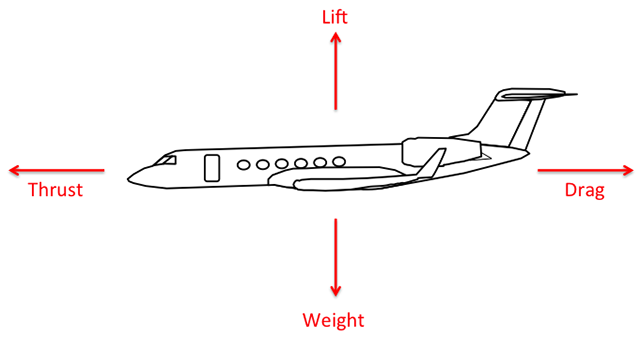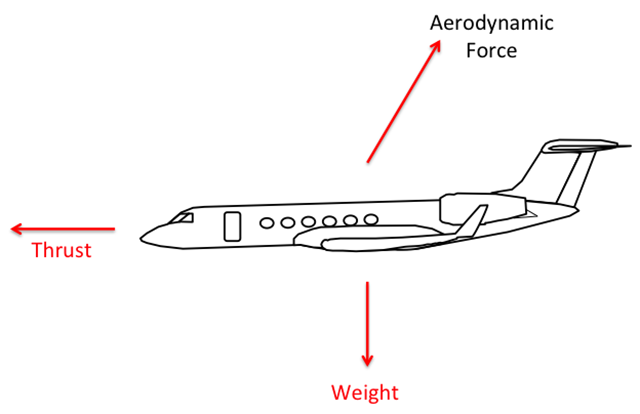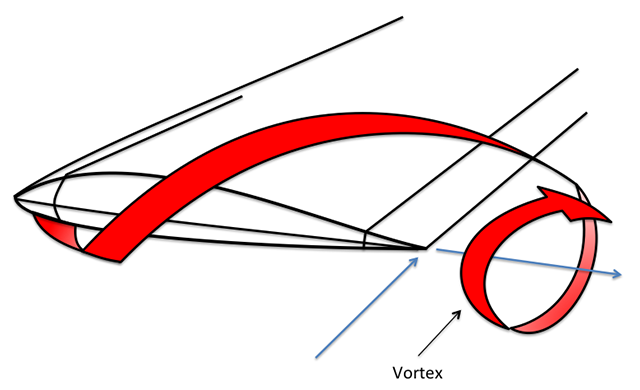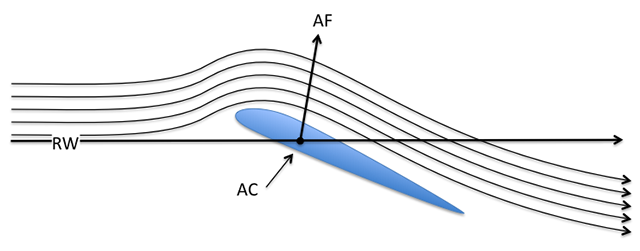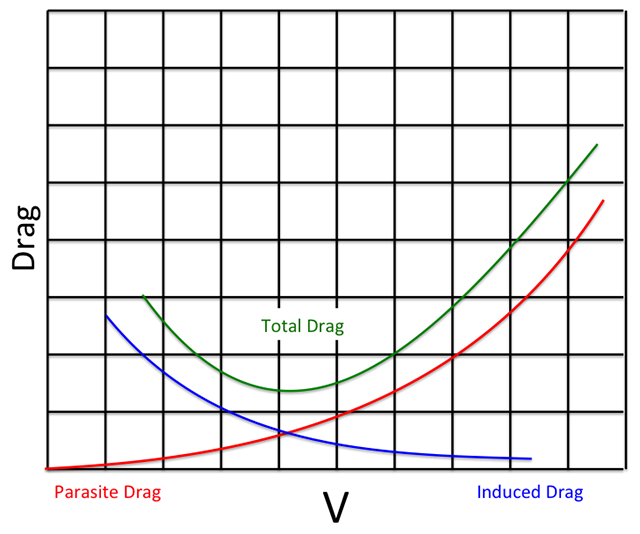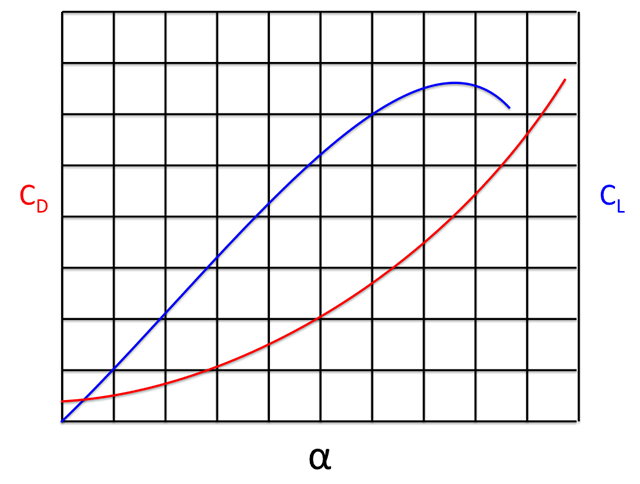The basic lift vs. weight / thrust vs drag drawing you probably learned in basic flight school was technically wrong: one of those forces doesn't really exist and another isn't really what you think it is. It was, however, enough to get you off the ground and it probably continues to serve you well today. But if you really want to understand how your airplane seems to defy gravity and how to get every ounce of performance from it, you need to understand what drag really is and it all starts with that diagram.
— James Albright

Updated:
2013-10-01
This all builds from our previous discussions of lift and will serve as the foundation for an examination of low speed flight.

1
Fictitious vs. real forces
Fictitious forces
Real forces
Recall from our discussions about lift, that lift itself really doesn't exist. The real forces pulling, tugging, pushing, or in some other way exerting a force on an aircraft are:
- Thrust — the push from the engines.
- Weight — the pull from earth on the mass of the aircraft.
- Aerodynamic Force — the force generated by the wing's shape and angle of attack against the relative wind.
In the diagram these forces are shown in red. What of the forces shown in black? They are the two components of aerodynamic force resolved parallel and perpendicular to the relative wind. The force perpendicular to the relative wind is lift and is covered more fully under the lift section. The force parallel to the relative wind is drag. Drag comes in two forms: induced and parasite.
2
Induced drag
Induced drag is a difficult concept to understand, though its effects are clearly seen in a wind tunnel. Perhaps the best way to introduce the concept is to consider how an airfoil with no ends would behave, as impossible as that may be, and then look at what happens when we introduce a wing tip.
The Theoretical Wing (No net down wash)
The so-called infinite wing displaces air for a while, but the air particles return to their original positions along the relative wind. The relative wind experience up wash as it approaches the airfoil and down wash as it leaves the airfoil. But the up wash and down wash are equal so the net effect is canceled. Because of this, the aerodynamic force occurs perpendicular to the relative wind and their is no induced drag. In other words, all of the aerodynamic force is producing lift, none of it is pulling the wing backwards.
Wing Tip Vortices Impact on Down wash
A finite wing, that is one with wing tips, cuts through the air with higher pressure on the bottom than the top. Some of this pressure spills over at the tips and curls inboard. Because the wing is moving forward, the air curling inboard and aft hits the trailing edge airstream and pushes it downward.
The Real Wing (With net down wash)
The vortices push down on the trailing edge airstream which deflects the aerodynamic force aft. It is no longer acting perpendicular to the relative wind. A perpendicular component continues to lift the airfoil while a parallel component exerts a force aft. This force is Draginduced.
- Wing tip vortices are formed by higher pressure air beneath a wing moving into lower pressure air above the wing.
- Wing tip vortices cause the airflow behind the wing to be pushed downward; this is called down wash
- Down wash causes the RW behind the wing to be deflected downward at a down wash angle.
- The RW at the AC is influenced by the down wash, and it is deflected downward by one-half the down wash angle.
- The [aerodynamic force] is tilted backward by the induced angle of attack αi, which is numerically equal to one-half the down wash angle.
- The rearward component of the tilted [aerodynamic force] vector is induced drag.
Source: Dole, pg. 53
3
Parasite drag
Parasite drag is what most people think about when considering drag:
- Skin Friction Drag — from the roughness of the skin of the aircraft impedes its ability to slide through the air. Skin friction drag is made worse by factors such as exposed rivet heads, ripples in the skin, or even dirt and grime.
- Form Drag — is simply the shape of the aircraft. Form drag can be reduced by streamlining nacelles and other attempts to make the airplane more aerodynamic.
- Interference Drag — occurs when various aircraft parts are close enough to where their boundary layers join and become even larger obstructions to smooth air flow.
- Leakage Drag — occurs when high pressure inside the aircraft structure leaks out through an intentional or unintentional hole. The aircraft's pressurization outflow valve, for example, can impede smooth air flow. So too can minor gaps in aircraft skin or poorly sealed antennas.
4
Total drag
When plotted against speed, parasite drag starts at zero and goes up. Induced drag starts when the wing start producing lift at high angles of attack and is very high, but then decreases as speed increases. The two speeds added together make up total drag and where total drag is at a minimum, Draginduced = Dragparasite and each is equal to one-half of total drag.
5
Drag equation
Basic Lift Equation: L = CL q S
The coefficient of lift, as shown on the graph, starts small and increases with increasing angle of attack. There comes a point, however, where lift reaches a maximum and drops off.
The coefficient of drag, on the other hand, starts small and increases with increasing angle of attack with no end.
The drag equation is similar to the equation for lift:
References
(Source material)
Dole, Charles E., Flight Theory and Aerodynamics, 1981, John Wiley & Sons, Inc, New York, NY, 1981.
